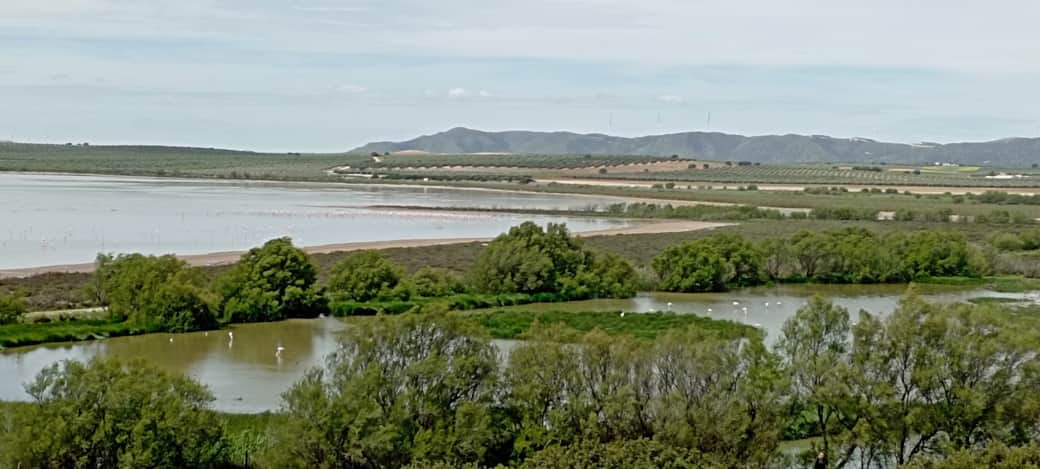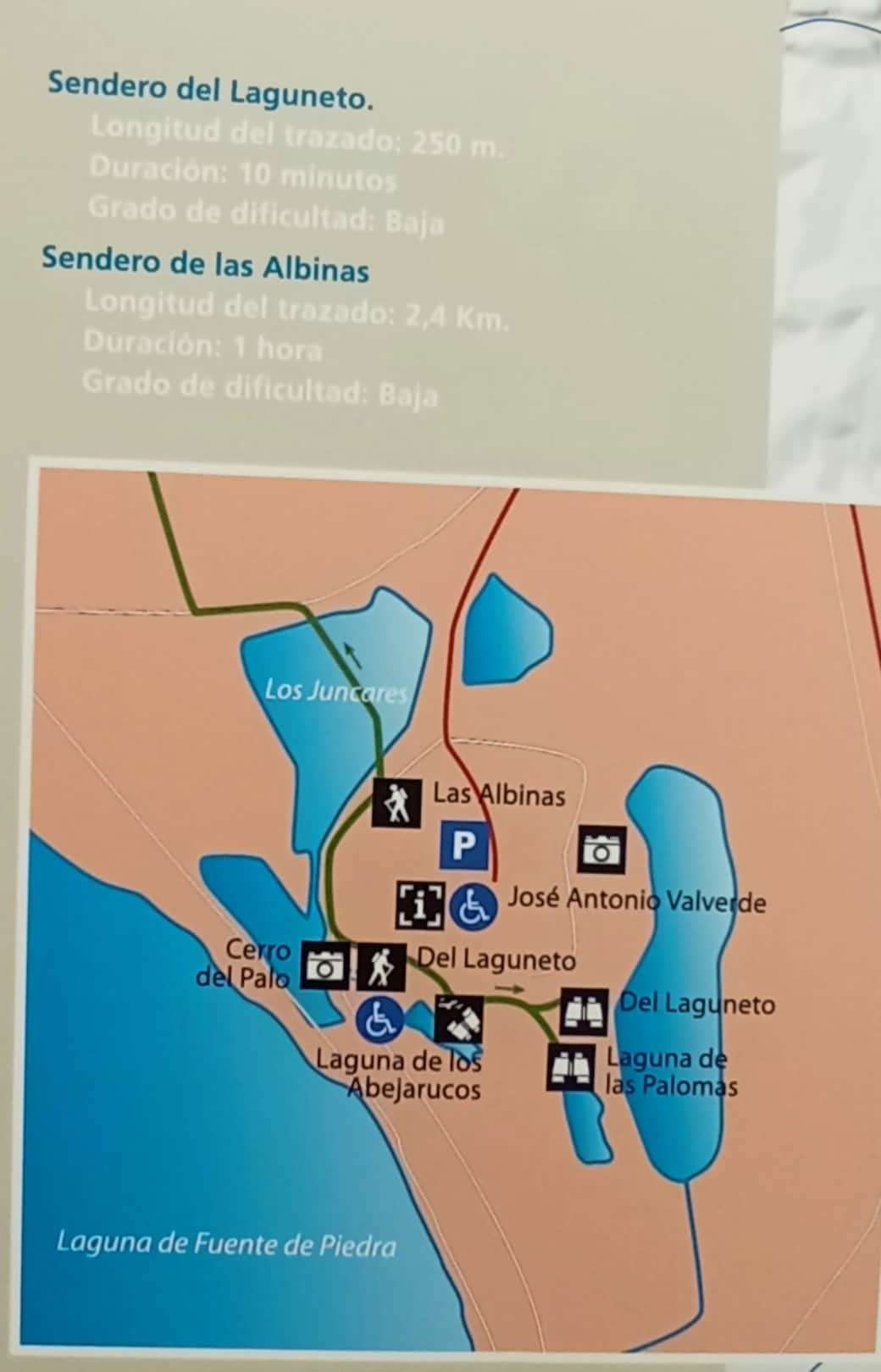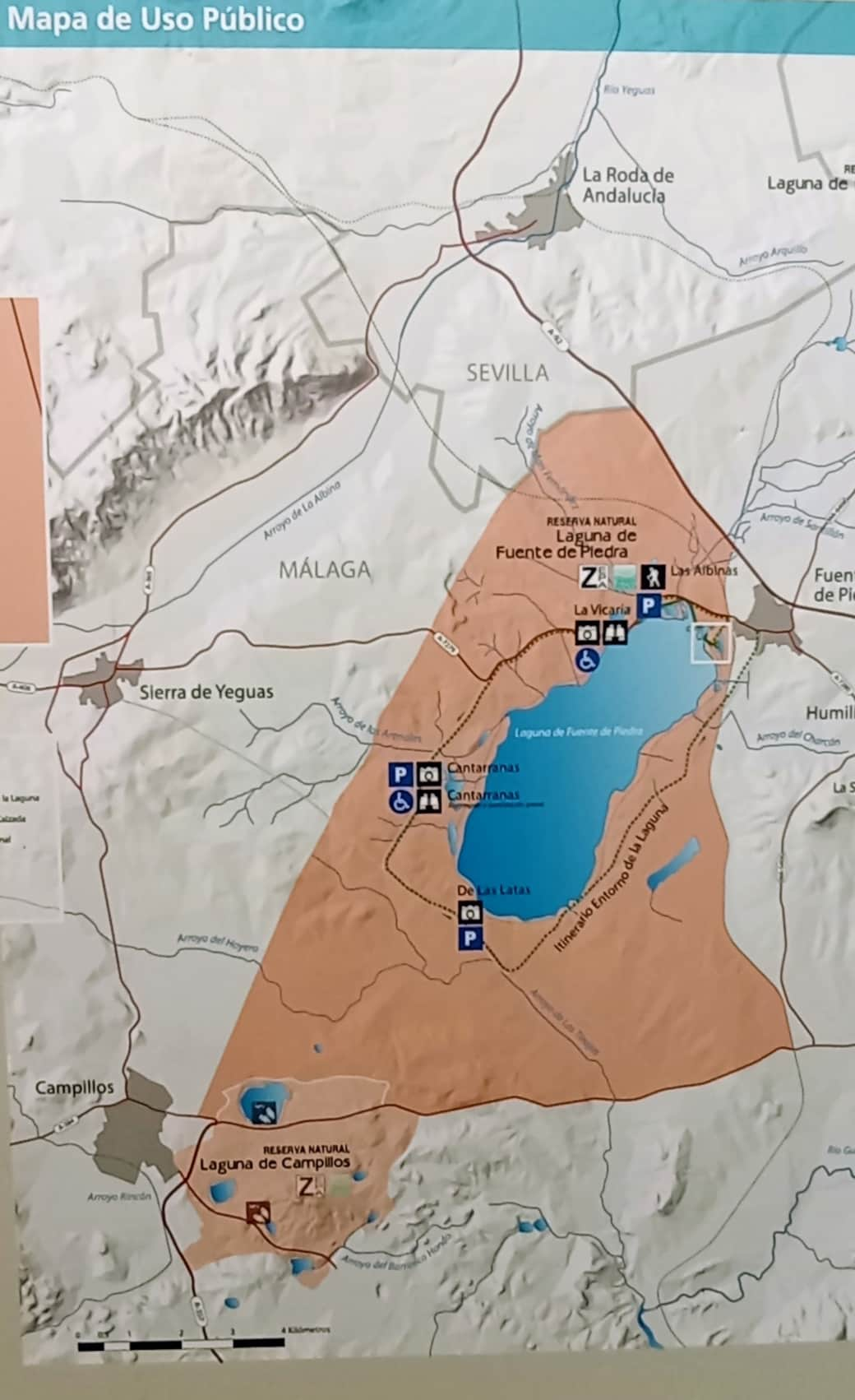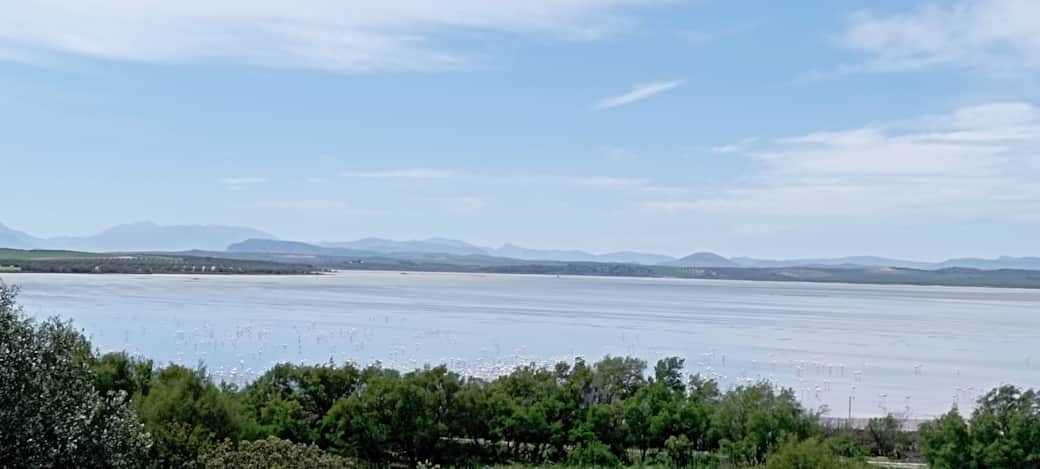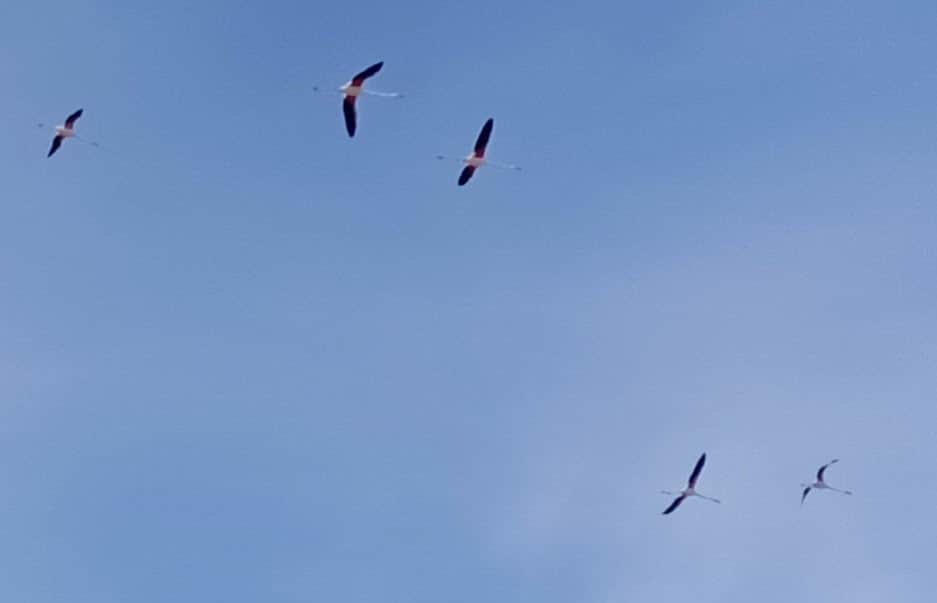The lakes at Fuente de Piedra Natural Reserve is the largest in Andalusia with its 1,400 hectares, constitutes a unique enclave within the wetlands of the Western Mediterranean . It is home to the largest colony of pink flamingos in the entire Iberian Peninsula and the second largest in Europe after the one in Camarque in France. It belongs to the group of lagoons in the Antequera area , which includes other natural reserves that add up to a total of 3,000 hectares of wetland.
Elliptical in shape, among its main characteristics are the endorheic character and the salinity and temporality of its waters, which are recharged thanks to the contribution of the rains, the collaboration of the Santillán and El Humilladero streams , and the underground flow from a aquifer. The increase in water evaporation in spring causes the salt to crystallize on the surface, which has favored its industrial exploitation from Roman times until the 1950s, as witnessed by different structures.
The vegetation adapted to saline environments is to thank for some of the beautiful surroundings at the main part of the lagoon border. Plants such as salt soda, soda or scorpion grow on the clay soils of the lagoon; along with others typical of a grassland with arid and dry climates. Associated with the limits of the lagoon and entering its waters, the characteristic tree vegetation appears, which is made up of tamarisk trees. Sometimes they form thick forests, constituting areas that are very important during the breeding seasons of a large number of bird species.
Mammals are abundant in the park and this is thanks to the hard work providing a suitable habitat of the environment by agriculture. The presence of dormice and water rat has been confirmed, in addition to rabbits and hares, hedgehogs and bats, which can be spotted. The fox and the badger are the most characteristic predatory mammals in the area.
It is the birds that have the greatest presence, with more than one hundred and seventy species catalogued, among which waterfowl stand out. Currently, it is the most important enclave where common flamenco is reproduced regularly. In addition, other aquatic species can be seen such as the white-headed duck, grey heron, slender-billed gull, black-billed gull, stilt, common goose and shoveler. Other birds visit the lagoon during the winter period or during periods of migratory passage; This is the case of many birds of prey and waders. You can also see kites, storks, marsh harriers and ospreys.
The neighboring Campillos and La Ratosa lagoons have similar characteristics , which act in a complementary way together with it in the maintenance of waterfowl communities. Also, in its vicinity, there are a series of lagoons such as El Laguneto and Cantarranas .
There are signed walks around the area as can be seen on the bottom left hand map. The other map shows an exploded map of the area.
